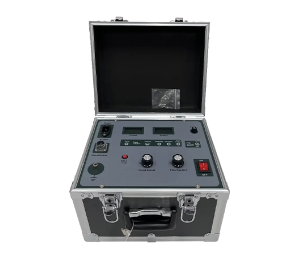 English
English


polarity test for transformer
Polarity Test for Transformers An Essential Diagnostic Tool
Transformers are critical components in electrical power systems, used for stepping up or stepping down voltage levels for efficient power transmission and distribution. The reliability and safety of electrical systems heavily depend on the integrity of transformers. Therefore, conducting regular diagnostic tests is essential to ensure their optimal operation. One such important test is the polarity test, which helps to verify the configuration and functioning of transformer connections.
Understanding Polarity
Polarity in transformers refers to the relative direction of the magnetic fields generated by the coils during operation. It is crucial because incorrect polarity can lead to improper phase relations, causing issues in the electrical network. For instance, if the polarity is reversed, it may result in phase opposition and can lead to short circuits, equipment damage, and failure of synchronizing multiple transformers in parallel.
Purpose of a Polarity Test
The primary objective of the polarity test is to determine the correct polarity of the transformer windings, ensuring they are connected in a manner that supports the desired operation. This test is particularly important in configurations such as parallel transformers, where matching polarities is necessary for safe and effective operation. By confirming the correct polarity, technicians can ensure that the transformer will function optimally without adverse effects on the surrounding electrical system.
Performing the Polarity Test
The polarity test can be performed using various methods, but the most common involves using a simple setup with a voltage source and a measuring device. Here is a step-by-step outline of a typical polarity testing procedure
1. Connect the Transformer Ensure the transformer is disconnected from any live circuits. Connect the primary winding to a low voltage AC source. It is crucial to follow safety regulations and guidelines when working with electrical equipment.
polarity test for transformer

2. Apply Voltage Energize the primary winding while keeping the secondary winding open. This will create a magnetic field in the transformer.
3. Measure Voltage Measure the voltage induced in the secondary winding using a voltmeter. Record the reading.
4. Determine Polarity The next step involves shorting the secondary winding while the primary winding remains energized. Measure the voltage across the secondary. If the voltage reading is positive, the polarities are correct; if the reading is negative, the polarities are reversed.
5. Record Results Document all measurements and observations. If the polarities are incorrect, adjustments in the connections should be made immediately to prevent future issues.
Importance of Polarity Testing
The importance of performing a polarity test extends beyond just the initial installation of transformers. Regular testing can help detect potential problems arising from aging equipment, degradation of insulation, and improper maintenance. For utilities and industries that rely on high-voltage transformer installations, maintaining correct transformer configurations is vital for system stability, efficiency, and safety.
Moreover, while transformer manufacturers typically ensure that polarities are correct during assembly, factors such as installation errors or human mistakes during maintenance can lead to potential faults. Consistent testing helps in early detection of these issues, thereby prolonging the longevity of transformers and preventing catastrophic failures.
Conclusion
In summary, the polarity test for transformers serves as a fundamental diagnostic tool that ensures proper operation and safety in electrical systems. By verifying that polarities are correct, technicians can safeguard against operational inefficiencies, equipment damage, and safety hazards. Regular testing, combined with a comprehensive maintenance strategy, will greatly enhance the reliability of transformer systems, making it an indispensable practice for engineers and maintenance personnel in the power industry. The simplicity yet effectiveness of the polarity test reaffirms its essential role in the reliable operation of electrical equipment.
-
Differences between open cup flash point tester and closed cup flash point testerNewsOct.31,2024
-
The Reliable Load Tap ChangerNewsOct.23,2024
-
The Essential Guide to Hipot TestersNewsOct.23,2024
-
The Digital Insulation TesterNewsOct.23,2024
-
The Best Earth Loop Impedance Tester for SaleNewsOct.23,2024
-
Tan Delta Tester--The Essential Tool for Electrical Insulation TestingNewsOct.23,2024





